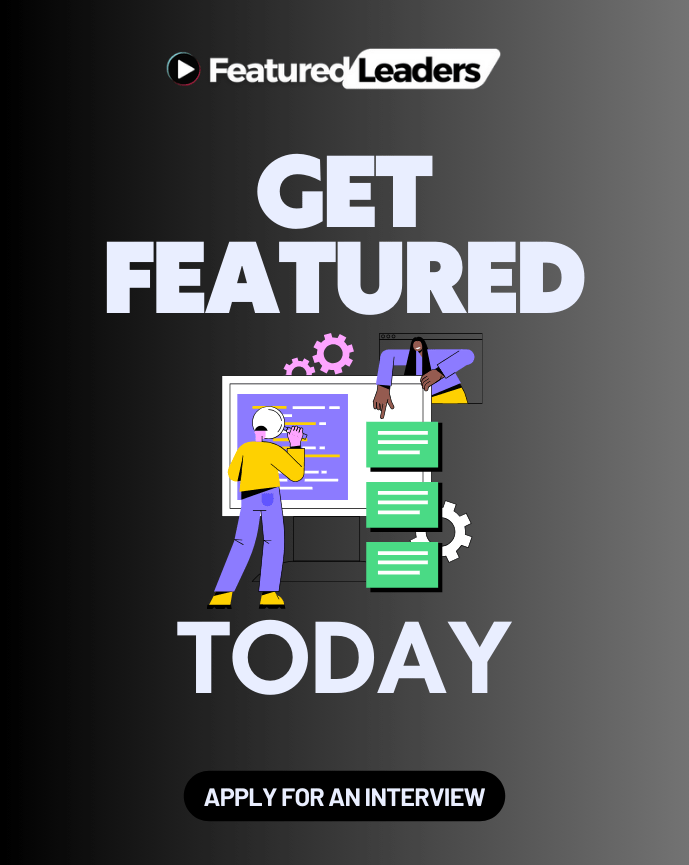Updated August 22, 2024. This short guide introduces a curated list of titles that help leaders sharpen mindset, habits, and people skills without wasting time.
You’ll find modern science and timeless principles paired with clear facts: year, pages, and core frameworks. Expect friendly, actionable insights that sum each book’s main idea and who will benefit most.
From classics like Think and Grow Rich to recent hits like Atomic Habits and Feel-Good Productivity, this list balances deep wisdom with practical tools you can use at work and in life.
Read by theme—mindset, then habits, then team application—to speed up results and cut context switching. Quick-start actions and author notes make it easy to pick the next book that fits your season and goals.
Key Takeaways
- A focused list saves you time by recommending books with clear payoff.
- Each entry includes year, pages, and core frameworks to judge effort and depth.
- Sequence reading by theme to build mindset, then habits, then team skills.
- Actionable summaries turn ideas into results for teams and careers.
- Classic and modern titles combine to support long-term development and transformation.
Start Here: Why books still shape leaders today
Reading rewires thinking: it gives leaders tested maps to navigate uncertainty. This list focuses on practical titles that link research, clear principles, and usable models.
If your intent is growth through personal development, this short list points to the best next book. Each entry notes year and pages so you can match reading time with urgency.
User intent and what you’ll find in this listicle
- Summaries that translate ideas into everyday practice at work and home.
- Quick cues on why each title matters to leaders and modern leadership.
- Clear signals about reading load and applicability—e.g., Atomic Habits (2018; 319 pages), The 7 Habits (1990; 447 pages), Think and Grow Rich (1937; 303 pages).
How we chose: principles, research, pages, year, impact
Selections favor durable frameworks, strong research, and compelling stories. We evaluated clarity of frameworks, author credibility, and how well concepts generalize across roles and industries.
- Focus on tools that aid decision-making, trust-building, and steady development.
- We separate hype from substance so your reading time produces measurable growth.
Mindset first: Classics that forged timeless leadership principles
These three classics lay the mental groundwork every reader can use to rewire how they decide, act, and connect.
Think and Grow Rich — mindset, desire, and the power of thoughts (1937; 303 pages).
This book reframes success as disciplined thinking and clear desire. It lists 13 steps—like faith and autosuggestion—that the author pairs with practical examples. Leaders can pick one practice and test its impact on decisions and culture.
The 7 Habits of Highly Effective People — principles to lead self and others (1990; 447 pages).
Covey’s guide moves you from private victory to public victory. It teaches proactivity, prioritization, empathy, and continuous learning as daily habits. Use one habit at a time to improve meetings, feedback, and team alignment.
How to Win Friends and Influence People — relationships, empathy, and influence (Updated 2022; 317 pages).
Dale Carnegie focuses on listening, genuine interest, and simple scripts that build trust. These techniques lower friction in conversations and help create lasting relationships that support long-term development.
- Quick note: we include year and pages so you can judge reading load.
- Expect durable principles and daily practices that compound into real transformation.
Habits that compound: Small changes, big leadership wins
Tiny habit shifts add up faster than big, infrequent pushes — especially at work. These two books give a clear approach to make small actions stick and to scale those actions across teams.
Atomic Habits — tiny behaviors, identity, and systems (2018; 319 pages)
Atomic Habits outlines the Four Laws of Behavior Change: Make it Obvious, Attractive, Easy, and Satisfying. The book focuses on identity-based habits so the person you want to be matches what you actually do.
The Power of Habit — cue-routine-reward in life and business
The Power of Habit explains the habit loop: cue, routine, reward. Use this model to diagnose routines and swap the middle step while keeping the cue and reward that already work.
- Learn strategies to build habits that support leadership with small, repeatable experiments.
- Use habit stacking, environment design, and simple tracking systems to reduce friction and boost follow-through.
- These methods scale to team norms, improving reliability, communication, and business outcomes.
- Note the year and pages to plan reading time: Atomic Habits (2018; 319 pages).
“Focus on systems, not goals, and change compounds into measurable progress.”
Modern productivity for leaders who value joy, focus, and time
Productivity that feels good boosts focus and keeps energy steady. This short guide highlights a modern approach that moves beyond willpower and toward sustainable joy-driven output.
Feel-Good Productivity (Ali Abdaal) — an engaging book (2022; 292 pages) argues: “The secret to productivity isn’t discipline. It’s joy.” The author pairs scientific research with practical methods to reduce friction and protect attention.
Actions and team-ready tools
- Design days around tasks people love and shield time for priority goals.
- Use calendar batching, friction audits, and small rituals to cue deep work.
- Align goals with intrinsic motivators so teams stay consistent without burnout.
- Run a one-week trial: apply batching, measure focus time, review morale and output.
| Title | Year | Pages | Core tools |
|---|---|---|---|
| Feel-Good Productivity | 2022 | 292 | Batching, friction audit, rituals |
| Applied Team Playbook | — | — | One-week trial, checklists, metrics |
“The secret to productivity isn’t discipline. It’s joy.” — Ali Abdaal
Leaders can model this approach to improve morale and measurable success. Use the short checklist above to pair joy with accountability and test impact on career and team development.
Personal transformation and the inner game of leadership
Changing what you believe changes how you respond when stakes rise. This section compares two influential titles that guide inner work into lasting action.

Awaken the Giant Within — decisions, beliefs, and lasting change (Year: 2007, Pages: 785)
Awaken the Giant Within blends psychology, NLP techniques, and step-by-step methods to rewire beliefs. It offers deep practices to shift emotions, relationships, and performance.
You Are a Badass — confidence, self-worth, and bold action (Year: 2013, Pages: 258)
You Are a Badass uses humor and clear stories to boost self-worth and prompt bold action. It’s a shorter, energizing read that nudges fast change through mindset shifts.
- Why it matters: belief systems shape decisions under pressure and influence how you lead others.
- Try identity statements, tiny daily triggers, and fast decision frameworks to reduce friction and test new habits.
- Use the pages and year to choose depth: one book is comprehensive, the other is concise and motivating.
| Title | Year | Pages | Core focus |
|---|---|---|---|
| Awaken the Giant Within | 2007 | 785 | Belief change, NLP techniques, sustained transformation |
| You Are a Badass | 2013 | 258 | Confidence, reframing, quick motivation |
“Inner work leads to outer results.”
Pick the book that fits your season: deep development or a motivation reboot. Apply one small practice this week and record its effect on life and team interactions as practical advice for ongoing growth.
Stoic wisdom and practical philosophy for resilient leaders
Stoic ideas offer a straightforward toolkit to steady your mind and sharpen decision-making in stressful moments.
How to Be a Stoic blends history with modern application and teaches focus on what you control. (Year: 2017; Pages: 288.) This book gives clear practices like pausing before reacting and using negative visualization to reduce fear of loss.
The Four Agreements presents four short principles that improve clarity in speech and lower needless friction. (Year: 2011; Pages: 153.) Apply “be impeccable with your word” and “dont make assumptions” to improve relationships at work and in life.
- Practical approach to resilience: focus on what you can control and let go of the rest to cut emotional noise.
- Daily moves: try a 60-second response pause, weekly negative-visualization practice, and short agreement check-ins after meetings.
- Expected result: clearer communication, steadier decision-making, and stronger team trust during change.
“Philosophy should be lived, not just studied.”
Emotional balance, stress, and sustainable leadership habits
Practical anxiety tools let leaders act calmly under heavy pressure.
How to Stop Worrying and Start Living (Year: 2010; Pages: 388) offers concrete methods like living in “day-tight compartments,” analyzing worries, and accepting worst-case outcomes. The book uses short anecdotes to make each idea stick.
Why this matters: these approaches cut rumination and protect clear thinking when priorities shift. Use structured worry reviews to separate real risks from imagined ones. Document next actions so worry becomes planning.
- Set a 15-minute worry review window each evening and list next steps.
- Break the day into compartments and focus on one segment at a time.
- Turn anxiety into preparation with risk logs and short pre-mortems for the team.
| Title | Year | Pages | Core tools |
|---|---|---|---|
| How to Stop Worrying and Start Living | 2010 | 388 | Day-tight compartments, worry analysis, acceptance |
| Daily Worry Review | — | — | 15-minute window, next-action list |
| Team Calm Rituals | — | — | Risk logs, pre-mortems, weekly check-ins |
“Small change in routine stabilizes energy and improves life at work and home.”
Try the quick checklist once per day and review weekly. These steps build resilience, sustain habits, and give people practical, compassionate advice to improve focus and decision quality.
Essential Leadership Books for Personal Growth: The curated short list
Short, high-impact reads give you clear moves you can test this week. Below are five compact titles that mix practical strategies, durable principles, and quick tools to try immediately.
Top picks if you’re short on time: principles, strategies, and tools to use today
Atomic Habits (2018; 319 pages): Four Laws, identity-focused habit work. Start one tiny system this week to improve execution and follow-through.
The 7 Habits of Highly Effective People (1990; 447 pages): A principle-centered framework that organizes life and work. Use one habit as your weekly theme.
How to Be a Stoic (2017; 288 pages): Practical control techniques to cut reactivity and strengthen calm judgment under pressure.
Feel-Good Productivity (2022; 292 pages): Redesign your schedule around energizing work and sustainable strategies that boost joy and focus.
The Four Agreements (2011; 153 pages): Simple rules that improve communication, trust, and daily interaction fast.
- We include pages so you can plan a short reading sprint and set realistic expectations.
- Pick one book, note one principle, and apply one habit or tool for seven days.
- Measure one outcome—fewer dropped tasks, clearer 1:1s, or more focused deep work time.
- Rotate to the next title as momentum builds to keep development steady without overwhelm.
“Choose one small practice today and watch steady progress compound into real success.”
From reading to results: Ways to apply lessons with your team
Convert book insights into team routines with simple tests and clear metrics.
Start small and keep it measurable. Run one-week experiments that link a cue, a tiny habit, and a single metric that ties to your goals.
Turn insights into habits: weekly experiments, metrics, and feedback loops
Design the test: pick an idea from a book and name the cue and reward. Use Atomic Habits’ Four Laws to Make it Obvious and Easy.
Use The Power of Habit loop to swap routines. Keep cue and reward, try a new routine, and log outcomes in a one-page tracker.
Create a weekly scoreboard and a five-minute Friday reflection to capture what stuck and what to tweak.
Coaching conversations: questions that spark thinking and change
Make coaching part of your cadence. Ask: “What outcome matters most this week?” and “What small change makes that easier?”
Practice seek first to understand in 1:1s—paraphrase before advising. Use The Four Agreements to be impeccable with your word and to check assumptions with one clarifying question.
| Step | What to do | Tool | Metric |
|---|---|---|---|
| One-week experiment | Define cue, tiny habit, reward | One-page habit tracker | Completion rate (%) |
| Weekly retro | Log outcomes and decisions | Weekly scoreboard + 5-min reflection | Behavior change score (1-5) |
| Coaching 1:1 | Ask outcome-focused questions | Coach prompts list | Clear next action count |
| Monthly review | Connect books to behaviors | Growth checklist | Stuck/slipped/next actions |
“Keep experiments small, measurable, and kind to capacity so change shows up fast.”
Conclusion
Conclusion
Let one clear lesson guide your next week of decisions and experiments.
Finish a book by trying one idea immediately. Pick a habit, a principle, or a short routine from the list above and schedule it into your time.
Small changes shape people, teams, and business results. Use stories and frameworks—Four Laws, habit loops, day-tight compartments—to make choices simpler.
Be a coach: model steady thinking, use plain words, and keep one question handy in 1:1s. Measure a small win, then repeat. That way reading turns into real development and lasting success.
FAQ
How do you pick these must-read titles and what criteria matter most?
We prioritized books with proven impact on leaders’ thinking and behavior. Criteria include clear principles, practical strategies, measurable results, pages and publication year, author credibility, and reader feedback. We also checked research citations, relevance to business and life, and longevity — books that shaped leaders across decades earn higher weight.
Which book should I start with if I want fast, practical change?
Begin with a short, actionable title that focuses on habits or productivity, like Atomic Habits or Feel-Good Productivity. These offer step-by-step tactics you can test immediately, plus simple metrics and feedback loops to measure progress.
Are older classics still useful for modern leaders?
Absolutely. Classics such as Think and Grow Rich and How to Win Friends and Influence People contain core mindset and relationship principles that remain relevant. You’ll often pair classic wisdom with modern tools to apply ideas in today’s teams and tech-driven workplaces.
How many pages should I expect to commit to each book?
Page counts vary widely — from around 150 pages for concise guides like The Four Agreements to nearly 800 for deep reads like Awaken the Giant Within. If time is tight, choose the short-list picks or read summarized chapters first, then dive deeper into the ones that change your thinking.
Can I use these books to improve team performance, not just my own habits?
Yes. Many titles include frameworks you can adapt for teams: run weekly experiments based on Atomic Habits, use coaching questions from leadership classics, or apply process routines from The Power of Habit. Pair reading with team workshops, metrics, and reflection sessions for best results.
How do I turn reading into real behavior change at work?
Translate insights into small, measurable experiments. Set one habit to test each week, track simple metrics, collect feedback, and iterate. Use coaching conversations to reinforce learning and create accountability within your team.
Which books focus most on mindset versus tactics?
Mindset-focused titles include Think and Grow Rich, Awaken the Giant Within, and You Are a Badass — they reshape beliefs and identity. Tactical books like Atomic Habits, The Power of Habit, and Feel-Good Productivity offer systems and routines to change day-to-day behavior.
Are there any recommended pairings to read together?
Pair a mindset classic with a habit or productivity book for balance. For example, read Think and Grow Rich alongside Atomic Habits to combine belief work with concrete routines, or match How to Win Friends and Influence People with The Power of Habit to boost relationships and consistent behaviors.
Do these books cover emotional resilience and stress management?
Yes. Titles like How to Stop Worrying and Start Living and stoic-influenced works such as How to Be a Stoic offer practical techniques for stress reduction, focus on what you can control, and mental practices that sustain leadership under pressure.
How often should leaders revisit these books?
Revisit key books every 6–12 months or when you face a new challenge. Each read yields different insights depending on your stage of career, team dynamics, and goals. Use highlights and notes to create a personal playbook you can refresh regularly.
Can I get similar value from summaries or should I read full texts?
Summaries are useful for quick orientation and selecting which books to read fully. For behavior change and deep mindset shifts, full texts provide the stories, nuance, and exercises needed to implement ideas effectively.
How do I balance reading time with a busy schedule?
Schedule short, consistent reading blocks — 15–30 minutes daily or during commutes. Use audio versions for multitasking. Focus on one book at a time and turn key takeaways into weekly experiments to ensure reading translates into action.






